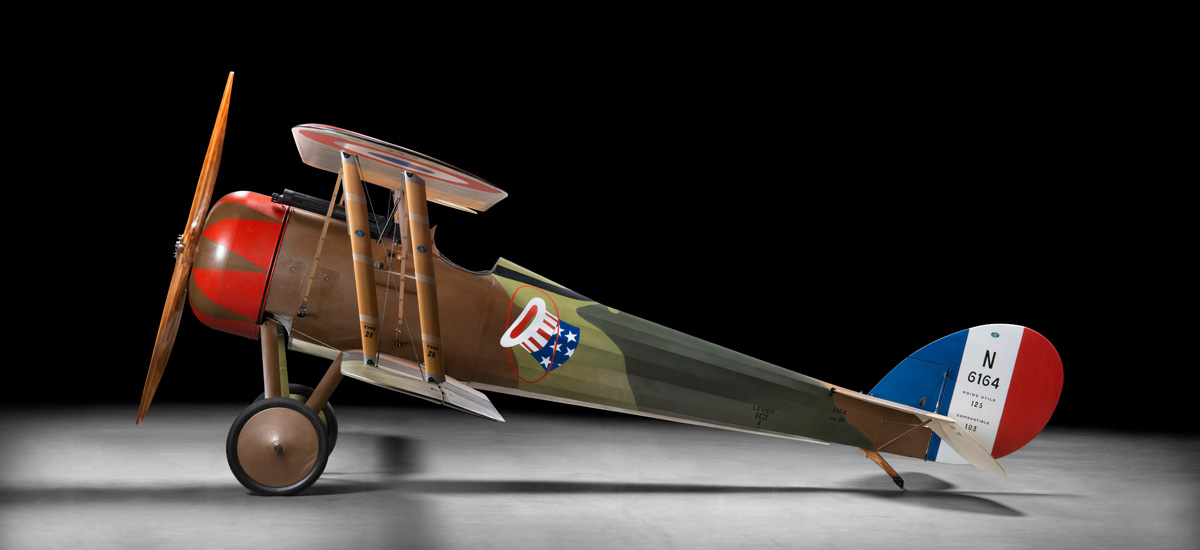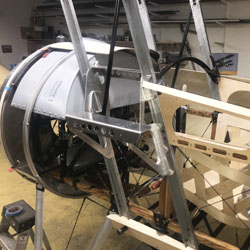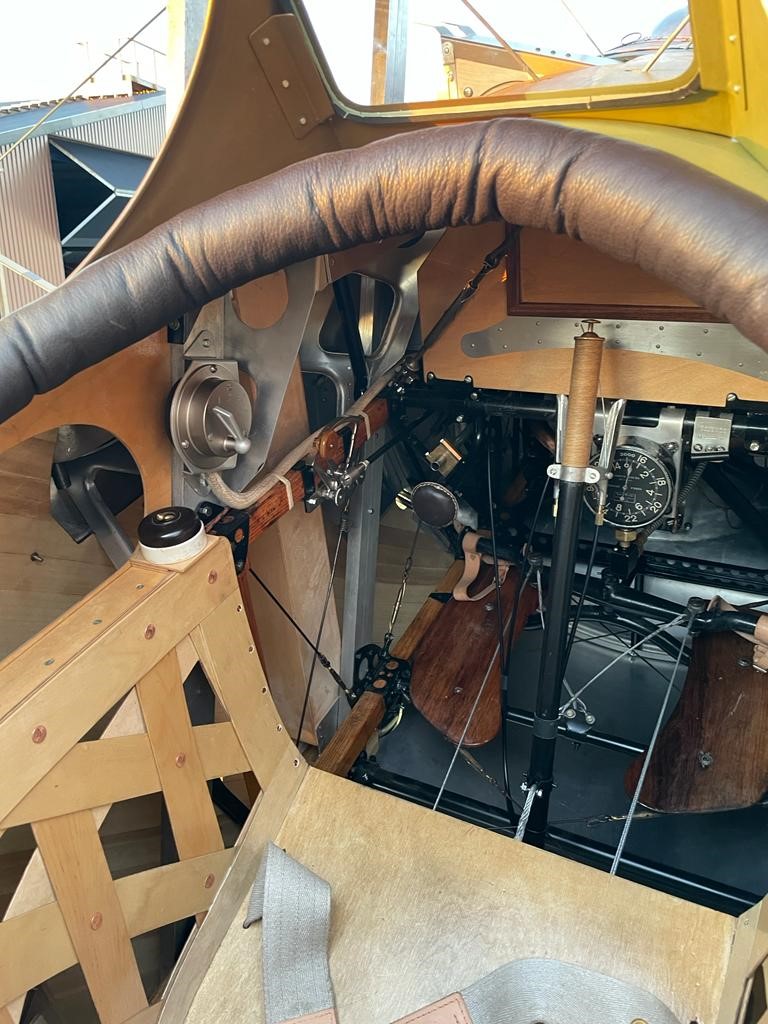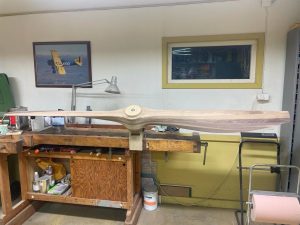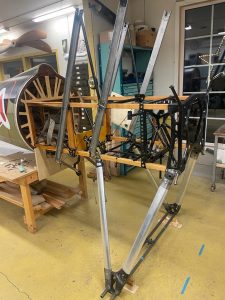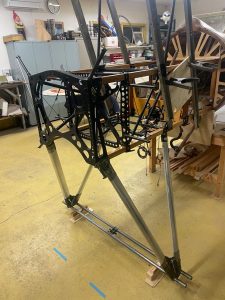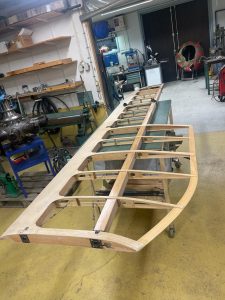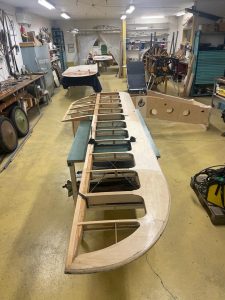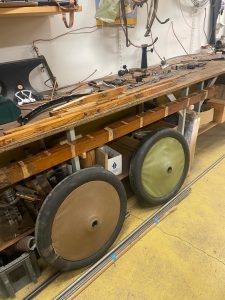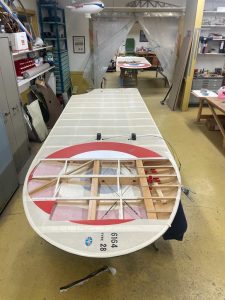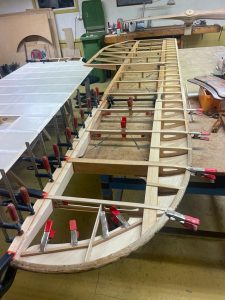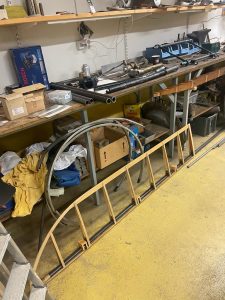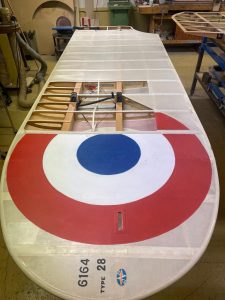In early 1918, with the air war over the skies of France and Belgium reaching their most dangerous point, American pilots with the Allied Expeditionary Force were anxious to take the fight to the German menace. Unfortunately, the French SPAD XIII aircraft they wanted were in short supply. France had trouble with engine production and the formalization of the SPAD as France’s premier front-line fighter. There were simply not enough of the new airplanes to go around. However, at the same time Nieuport had finished their ultimate biplane design. After almost a year of prototypes and re-designs, production had started on the Nieuport 28 (N.28). Since France had no need for the new N.28, the aircraft were deemed as surplus. The American 94th and 95th Aero Squadrons saw an opportunity and began taking the first allotments of the brand new Nieuports in mid-February 1918. When the Americans received the planes there was one minor issue – they weren’t shipped with any armament. Allied Expeditionary Forces didn’t have enough Vickers machine guns to supply the squadrons.
Making the best of a poor situation, the squadrons set to work on familiarizing themselves with the new 28s. Pilots like future top ace Eddie Rickenbacker, Douglas Campbell, and Quentin Roosevelt (the son of former president Theodore Roosevelt) could be found flying in the cold, early spring skies above friendly territory, learning and developing new tactics so they were prepared when the guns finally arrived. Deliveries of the guns began, albeit in fits and starts, and the first combat patrols were flown in mid-March, with some aircraft carrying just one machine gun instead of the usual two. The first victories weren’t far behind. On their squadron’s second patrol, pilots Douglas Campbell and Alan Winslow both shot down an enemy aircraft over their home field. As time went on, more and more victories were scored by the American squadrons. The Nieuport 28 became a beloved aircraft in the war against Germany. Unfortunately, Quentin Roosevelt was shot down and killed in July 1918, mere weeks before the AEF began taking deliveries of the more superior SPADs. The Nieuport 28 holds a special place in American aviation history as the first fighter U.S. forces flew into combat.
The Collings Foundation and American Heritage Museum are known around the world for restoring and operating some of the finest and most historically accurate aircraft. Our extraordinary N.28 restoration honors the designers, pilots, and mechanics of the First World War.
This Nieuport emerged from a factory near Paris, France late in 1918. Following WWI, the American government imported about fifty Nieuport 28s, including our N.28, to fill out the ranks of the newly established U.S. Army Air Service. After retirement from Army use, N.28 gained a new lease on life in civilian hands, being featured in a number of significant aviation films, such as Hells Angels (1930) and The Dawn Patrol (1930 & 1938). Part of a collection gathered by famed aerial performers Paul Mantz and Frank Tallman, the Nieuport continued flying into the 1960s, and was among the numerous unique airframes put up for disposal at the ‘Tallmantz Auction’ of May 1968. Legendary racing car builder/driver Jim Hall bought the Nieuport for $14,500. The aircraft was not flown after the early 1970s and largely disappeared from public view until 2019, when the American Heritage Museum started the restoration.
In the summer of 2019, the Nieuport was shipped from Texas to the workshop of famed aviation restoration expert Mikael Carlson in Sweden. The first order of business was careful disassembly of all components. Being a wooden structure, and more than a century old, it was expected that some parts would be useful only as patterns for exact new-build components. But, to Mikael’s delight much of the original structure was in excellent condition!
Surprisingly, the plane’s 1918 nine-cylinder Gnome Monosoupape 9N rotary engine was in outstanding shape. Mikael moved forward, completing the entire airframe and engine mount and then installed the power plant. With the front end fully assembled, Mikael was able to form the cowling to correct size and shape, within the very tight tolerances of the original design. All metal components were found to be in excellent condition and utilized in the restoration. The final touches included mixing hand ground pigment for the paint and decorating the plane in the markings of America’s first WWI Ace, Douglas Campbell’s original N28.
With the Nieuport 28 completed and test flown by Mikael in Sweden, it was put on a ship to Massachusetts. The aircraft was reassembled at the American Heritage Museum in time for our WWI Aviation weekend in September 2022. In honor of our WWI aviators and veterans, the aircraft is now on display in the American Heritage Museum.
Update January 2024
Repairs to the Nieuport 28 are taking place at the workshop of Mikael Carlson in Sweden following the forced landing at the museum airfield in September. Mikael reports that work is progressing swiftly. We are pleased to report that all original factory parts from 1917-1918 were not damaged, including primary wing structure and all metal parts in the fuselage. The fuselage from the firewall to the tail was not damaged and has been inspected and cleaned up. The landing gear that took the brunt of the damage during the forced landing, was newly fabricated during the initial restoration and has been repaired and re-installed. A new propeller has been produced and the engine is undergoing overhaul. The next step is the fabrication of a new cowling and replacement and repair of damaged fabric on the wings using the original specification Irish linen that would have been used in WWI. With all of this in mind, the aircraft should be fully repaired this year.


